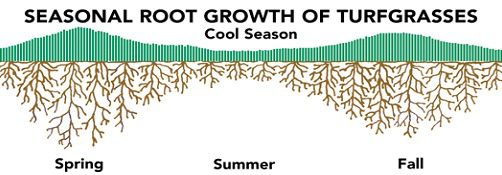How the Summer Heat Impacted Our Lawns
It’s been one of the toughest years ever for lawns. I’m told we had 23 days over 90 degrees, as opposed to 3 last year. Of course, it was the hottest July ever and the rain didn’t fall that much. Today, its 80 degrees, the leaves are falling and it’s still September.
I think the biggest problem this summer’s heat caused cool season grasses, was the high temperature of the soil. The roots of cool season grasses pretty much stop growing when soil temperatures reach 70 degrees and totally shut down at 77. The shoots stop growing when the air gets to 90 degrees. These are conditions we had most of the summer. That hot spell in August really threw some lawns over the edge. When the roots started to regenerate, they hit more heat. Crab grass, on the other hand, likes soil temperatures up to 85 degrees and air temperatures up to 120.

The challenges of the heat show up problems in the turf and the soil. Compacted soils don’t accept moisture well and the roots have difficulty growing into those tiny pores anyway. Shallow rooted lawns and those with a lot of thatch have more problems. A lot of water gets trapped in the thatch and it becomes a breeding ground for insects, weeds and disease. A lot of the lawns that browned out or died were bluegrass sod lawns on compacted soil. Bluegrass is the least drought tolerant of the cool season grasses and tall fescues, which we use, have deeper roots, no thatch and withstand drought the best.
A lot of our lawns that browned out in July came back nicely. We had some lawns where we tore up spots, top dressed and seeded. In general, we are doing more slice seeding, core aerating and top dressing than ever. Even though the leaves are falling prematurely, the nights are cool, we are getting some rain and the grass is growing again.
I got a lot of this information from Tom Butzier’s post, Brown Grass, from his ‘Gardening in the Keystone State’ blog.
need organic lawn care
